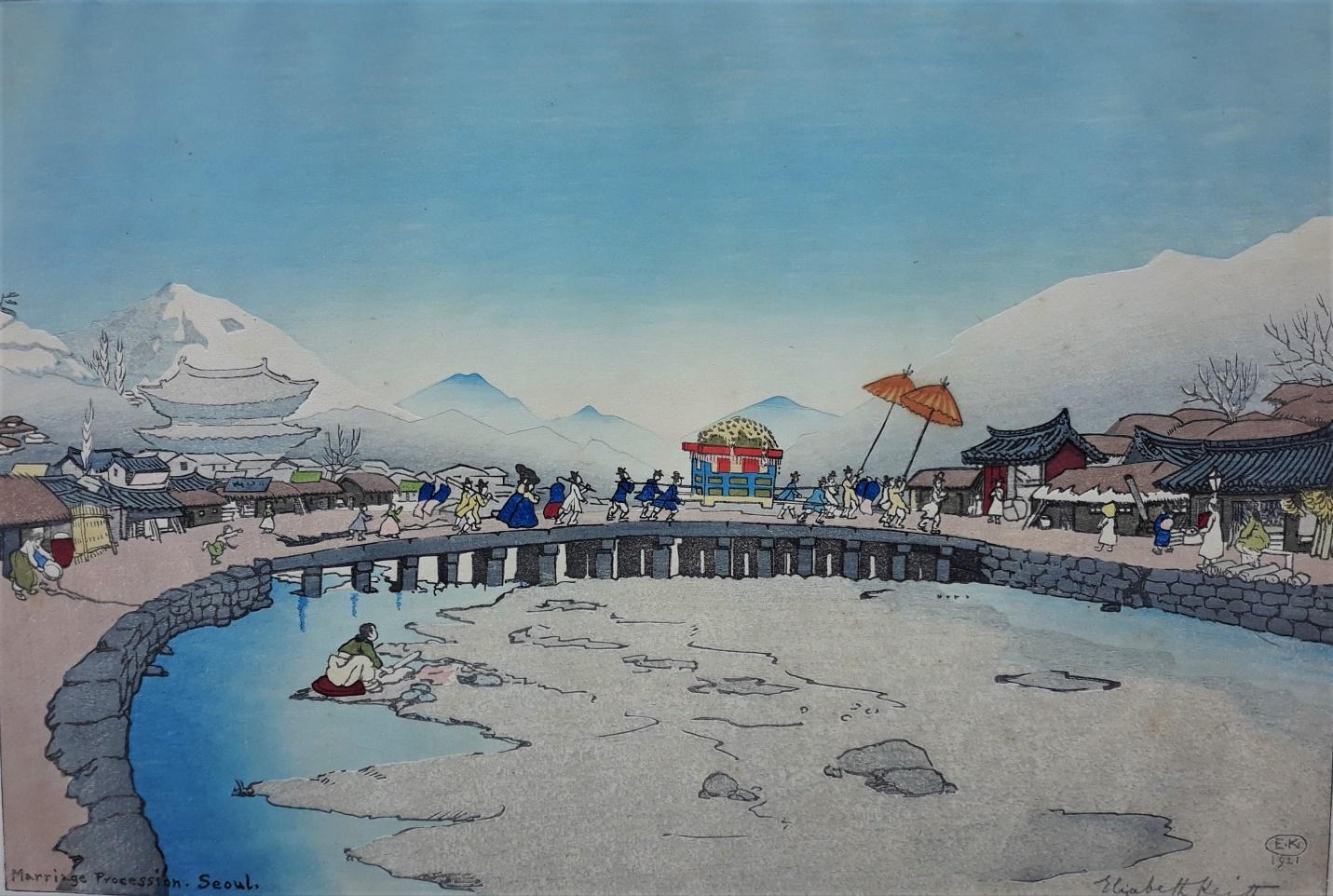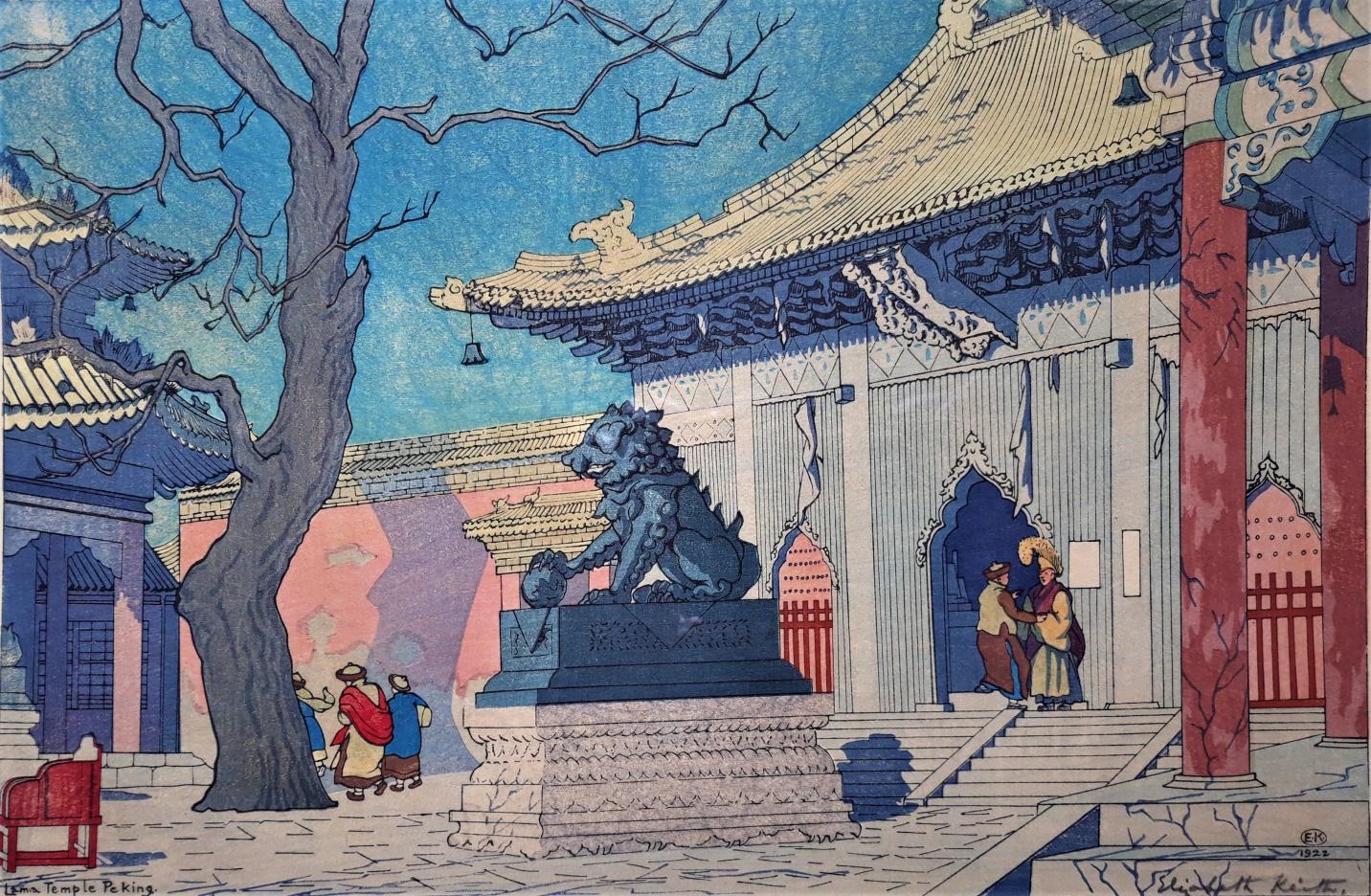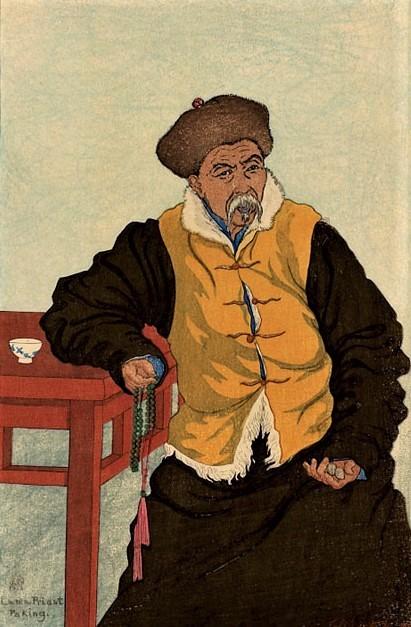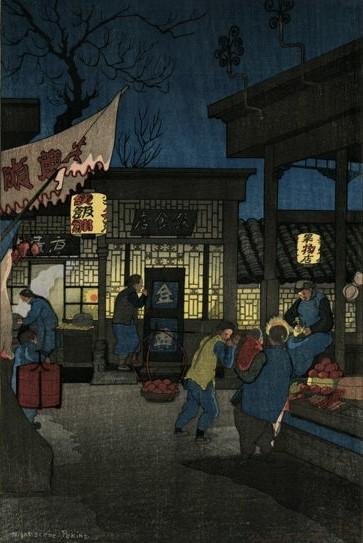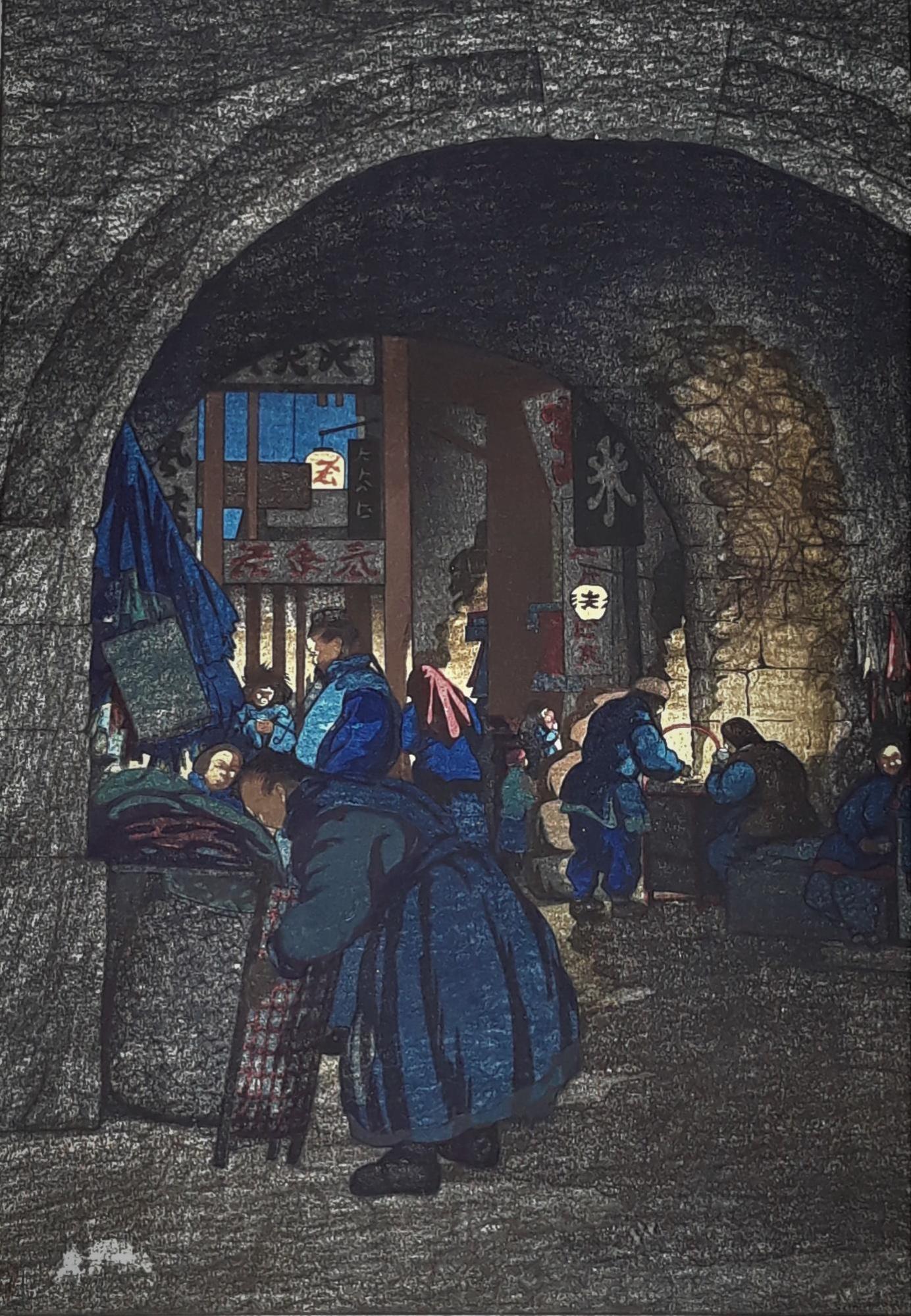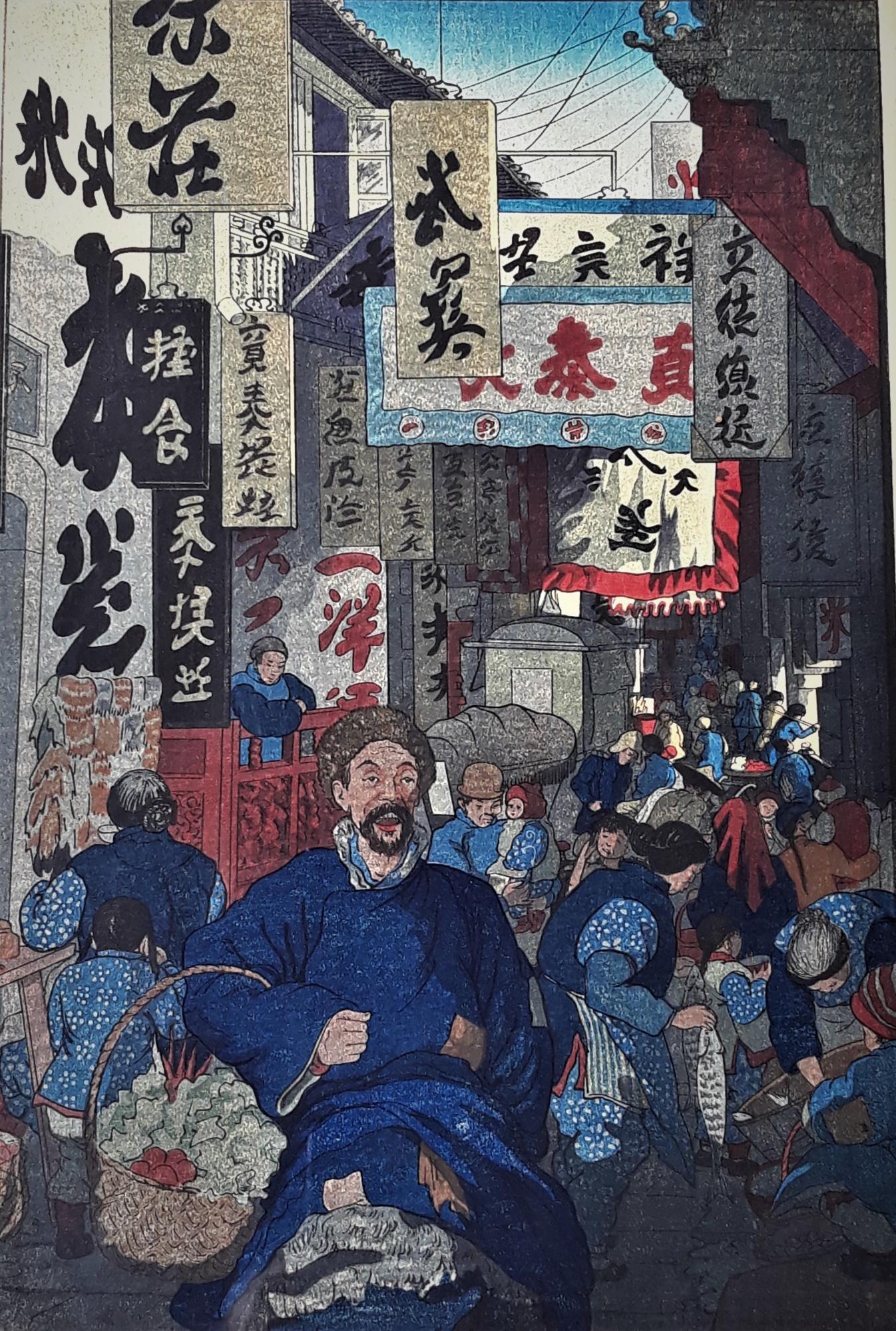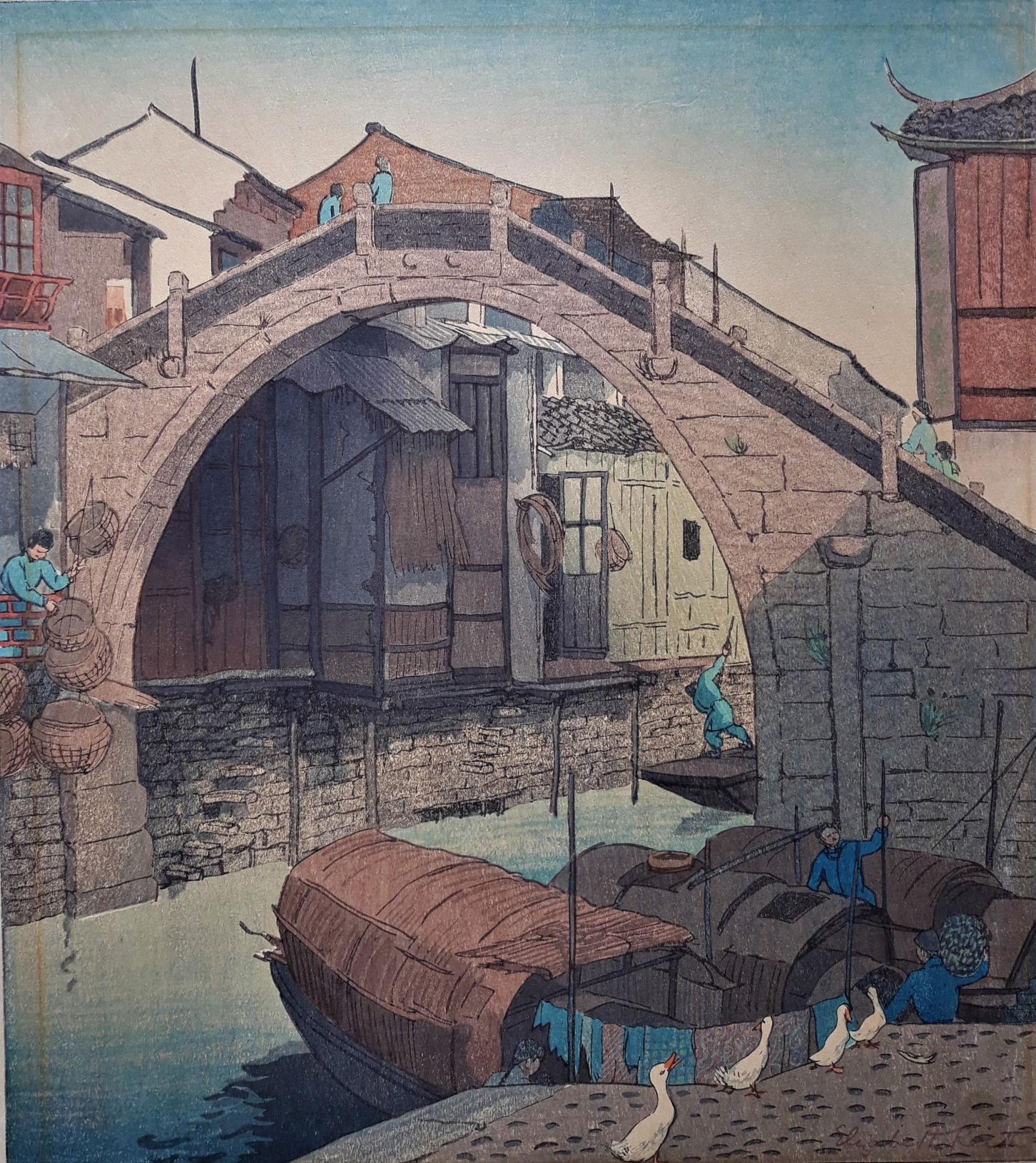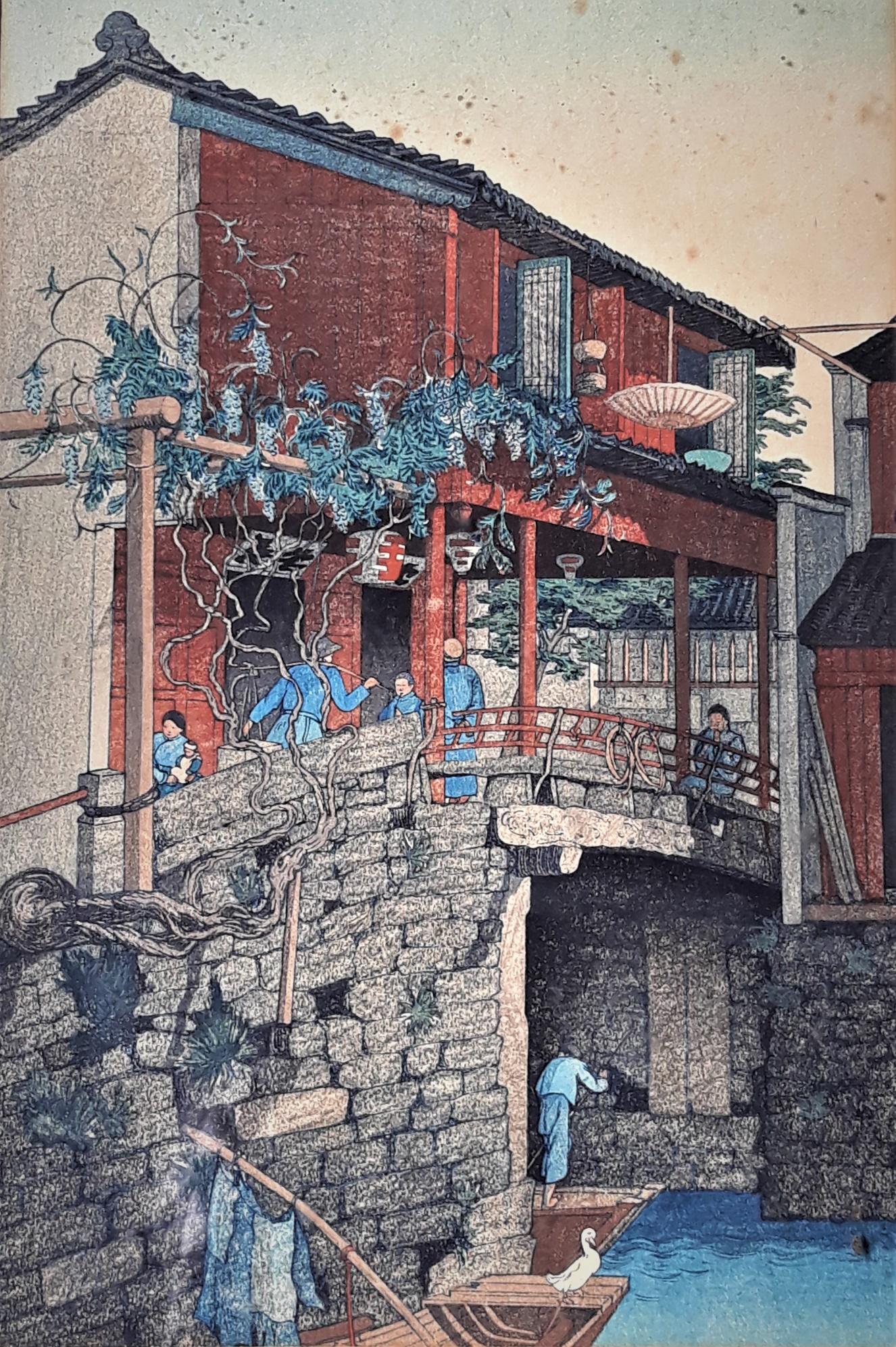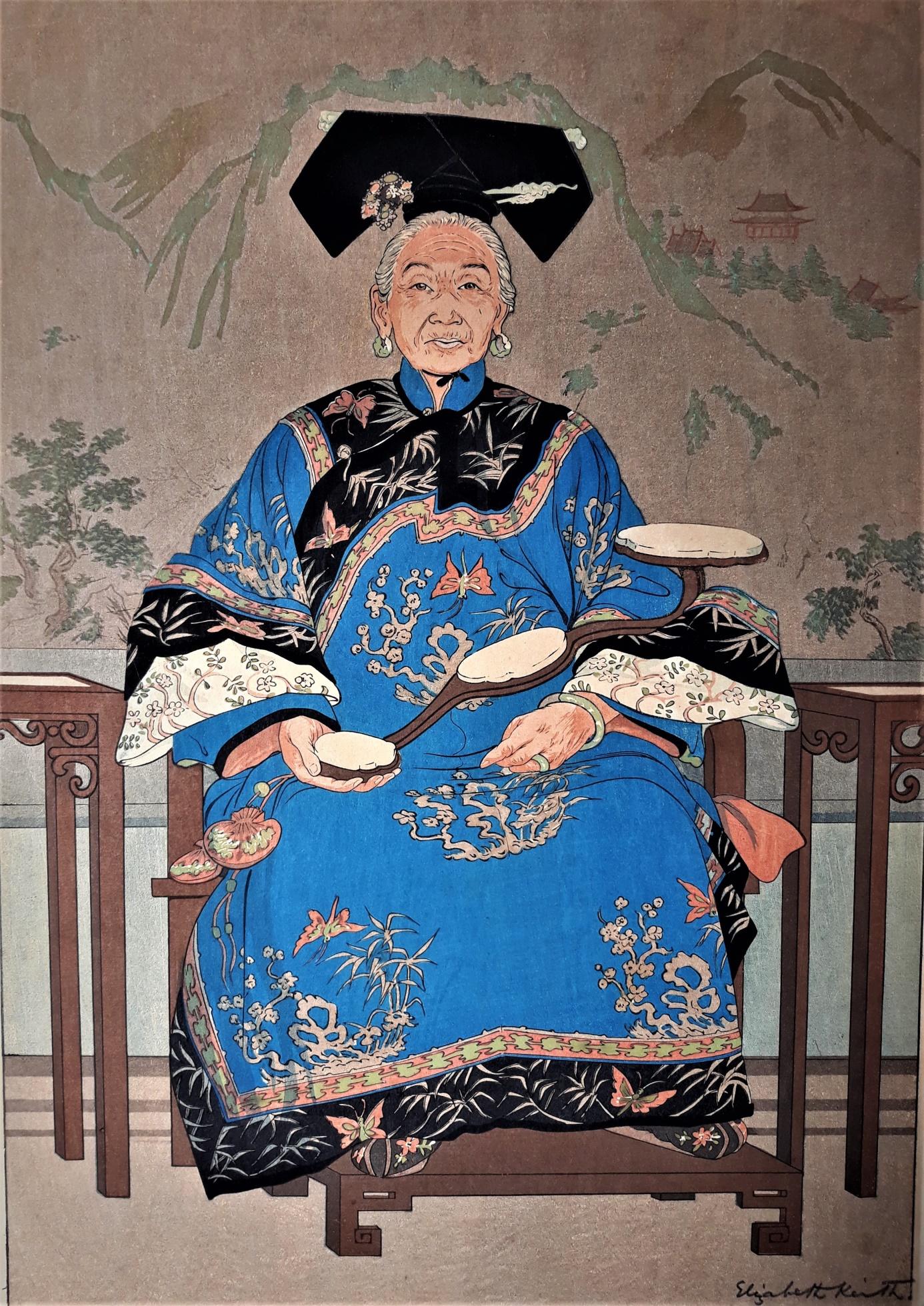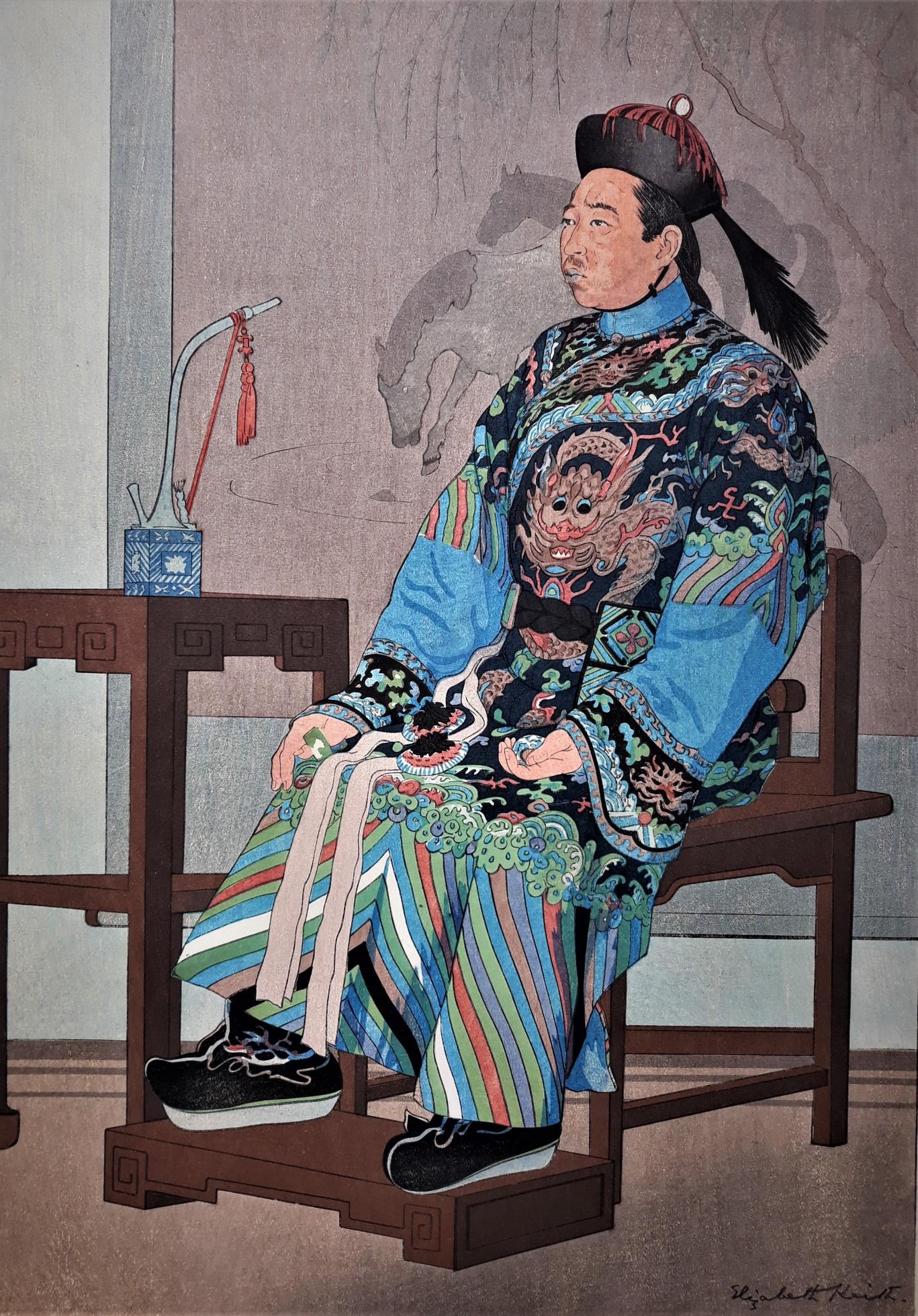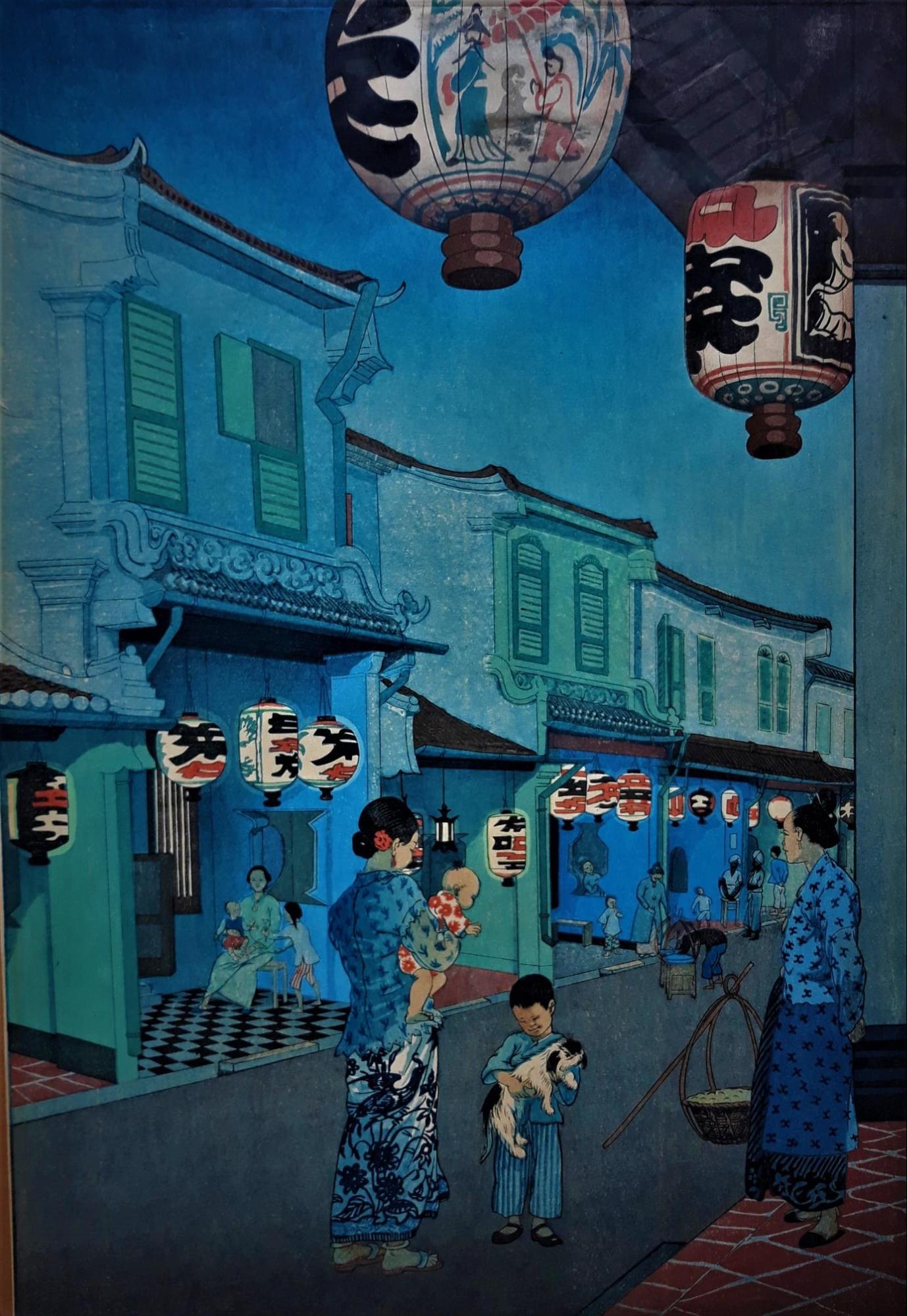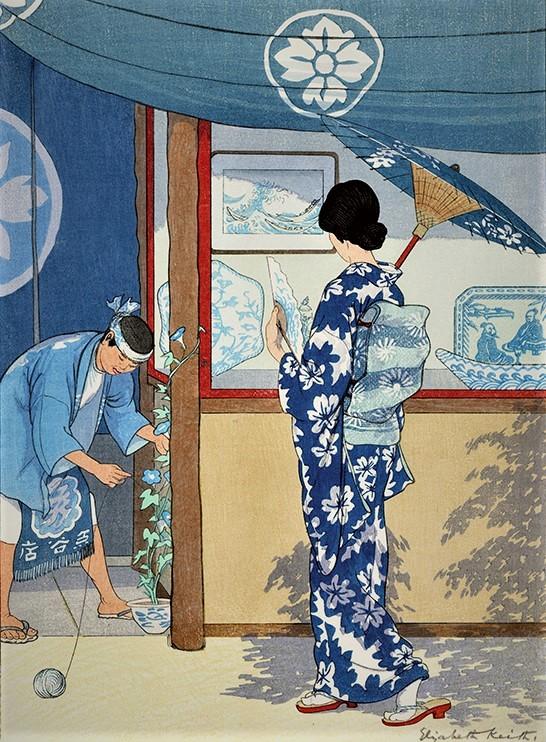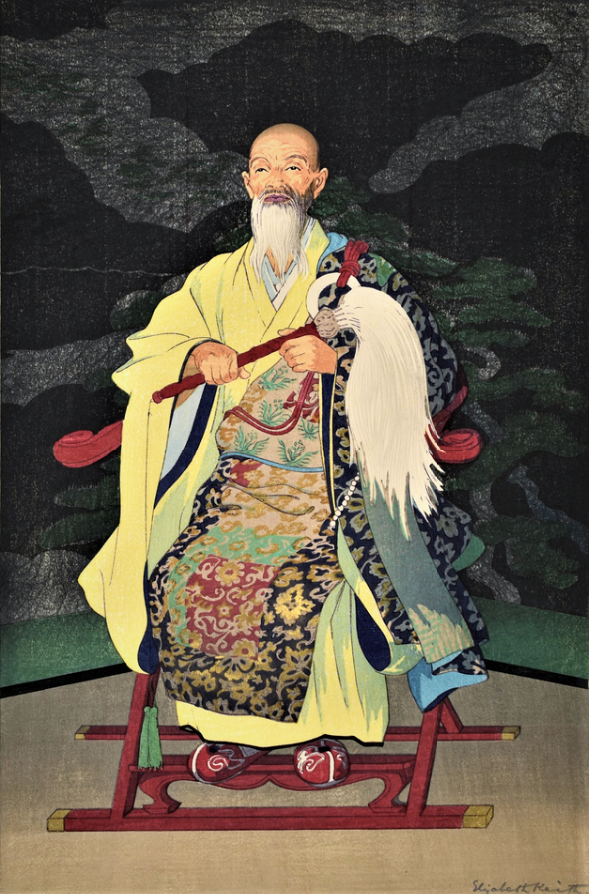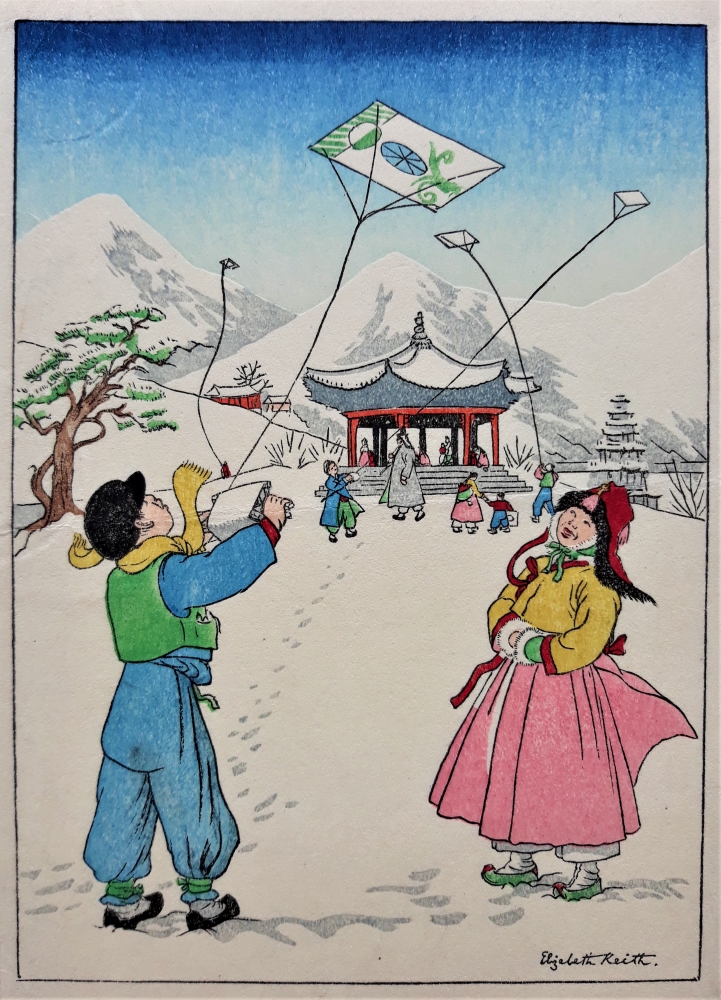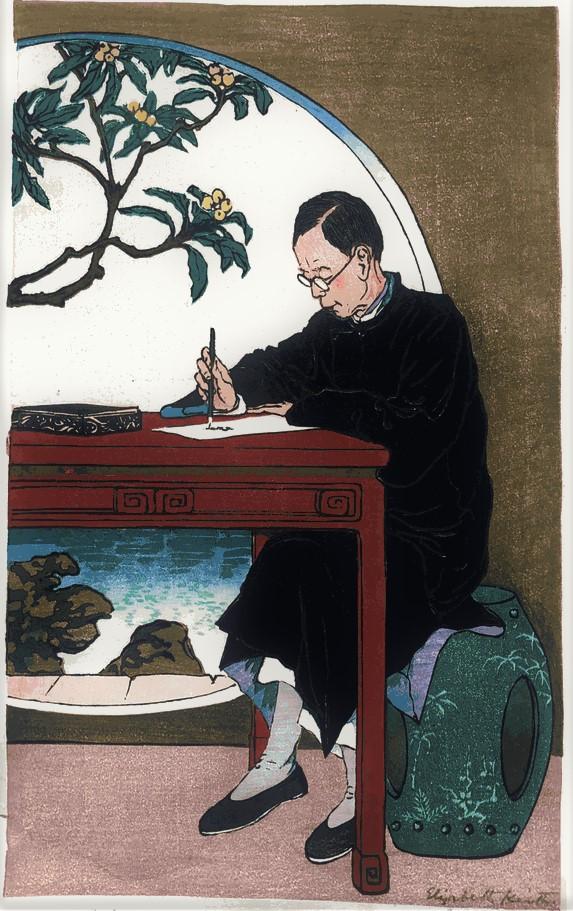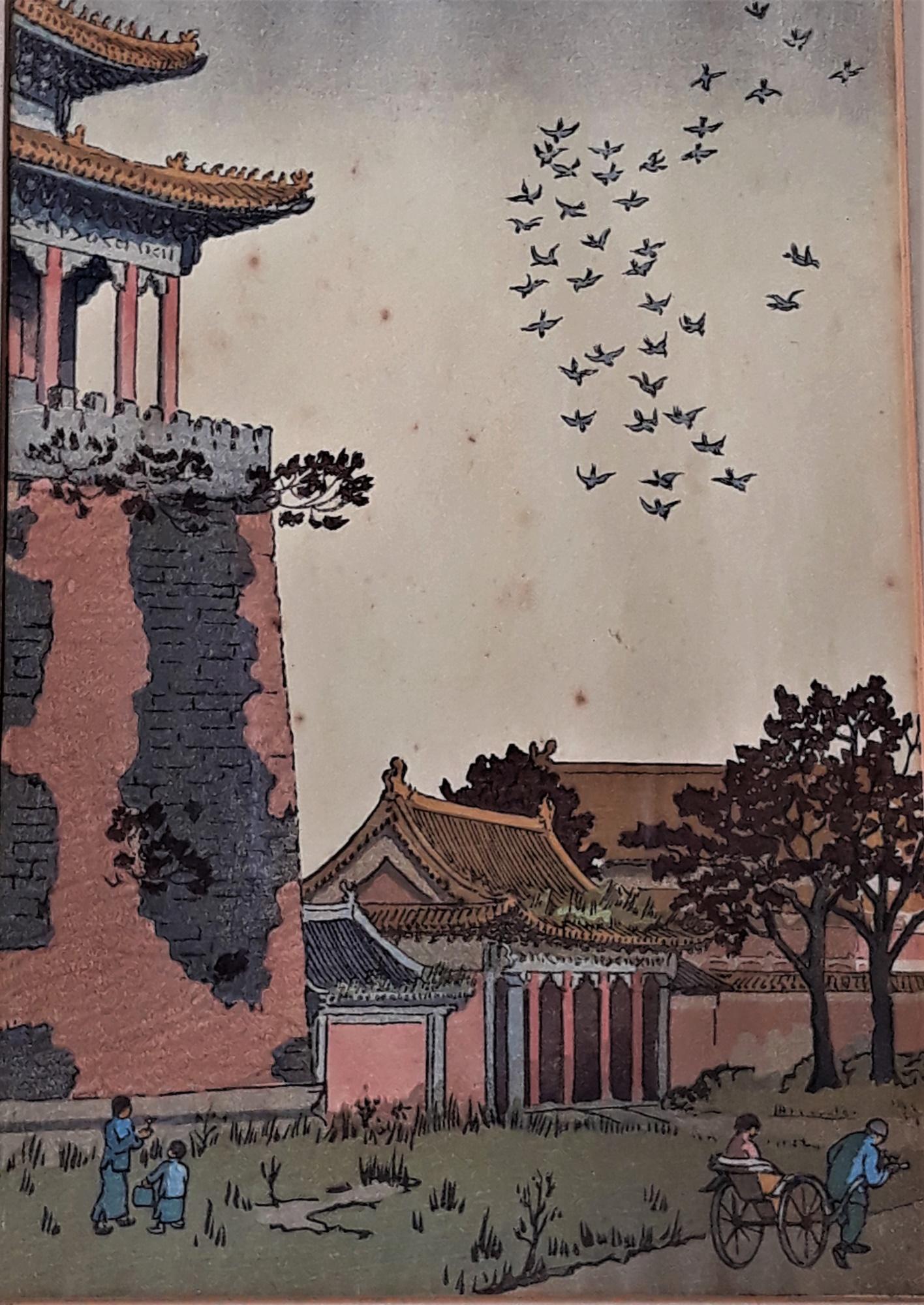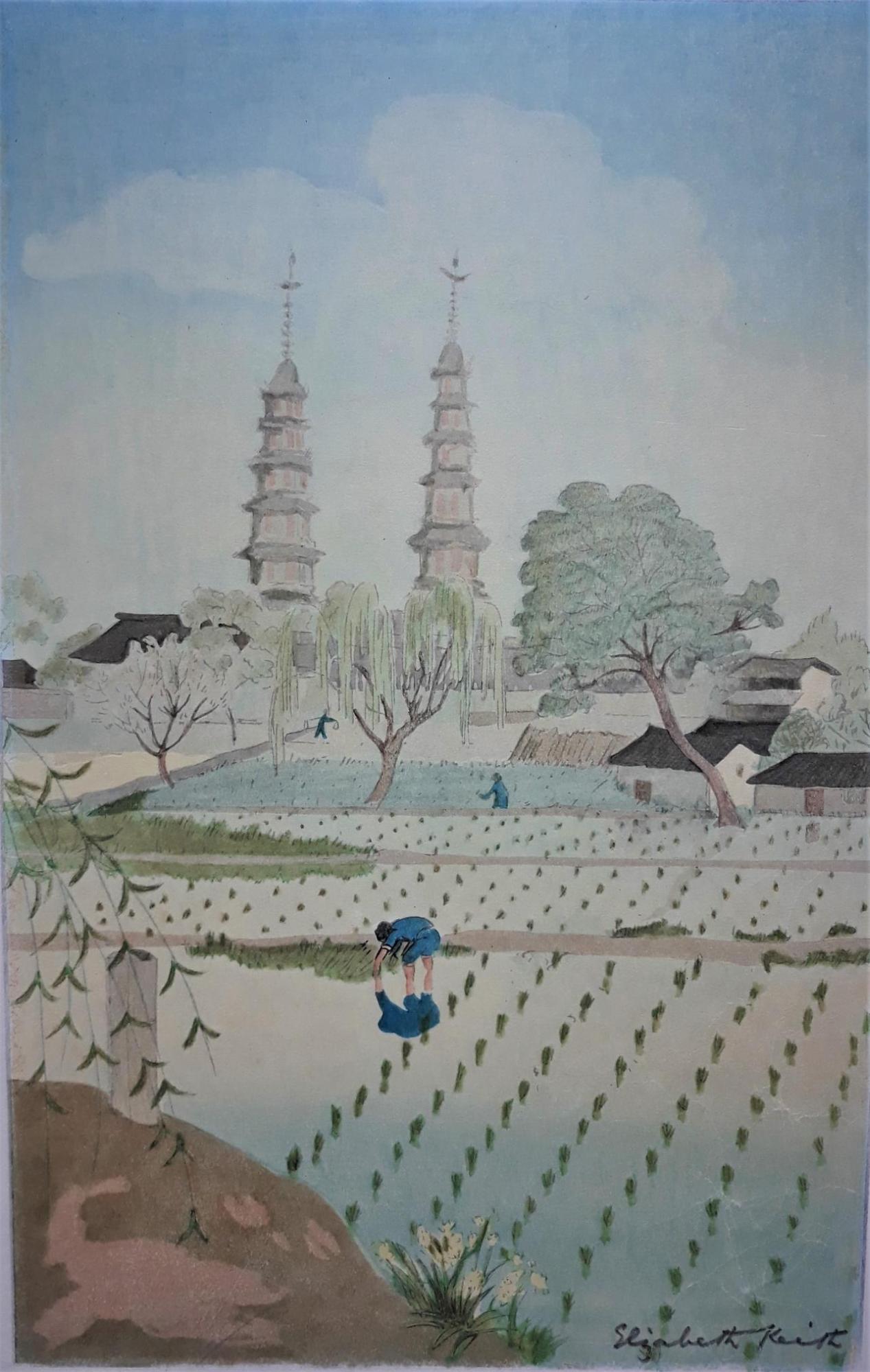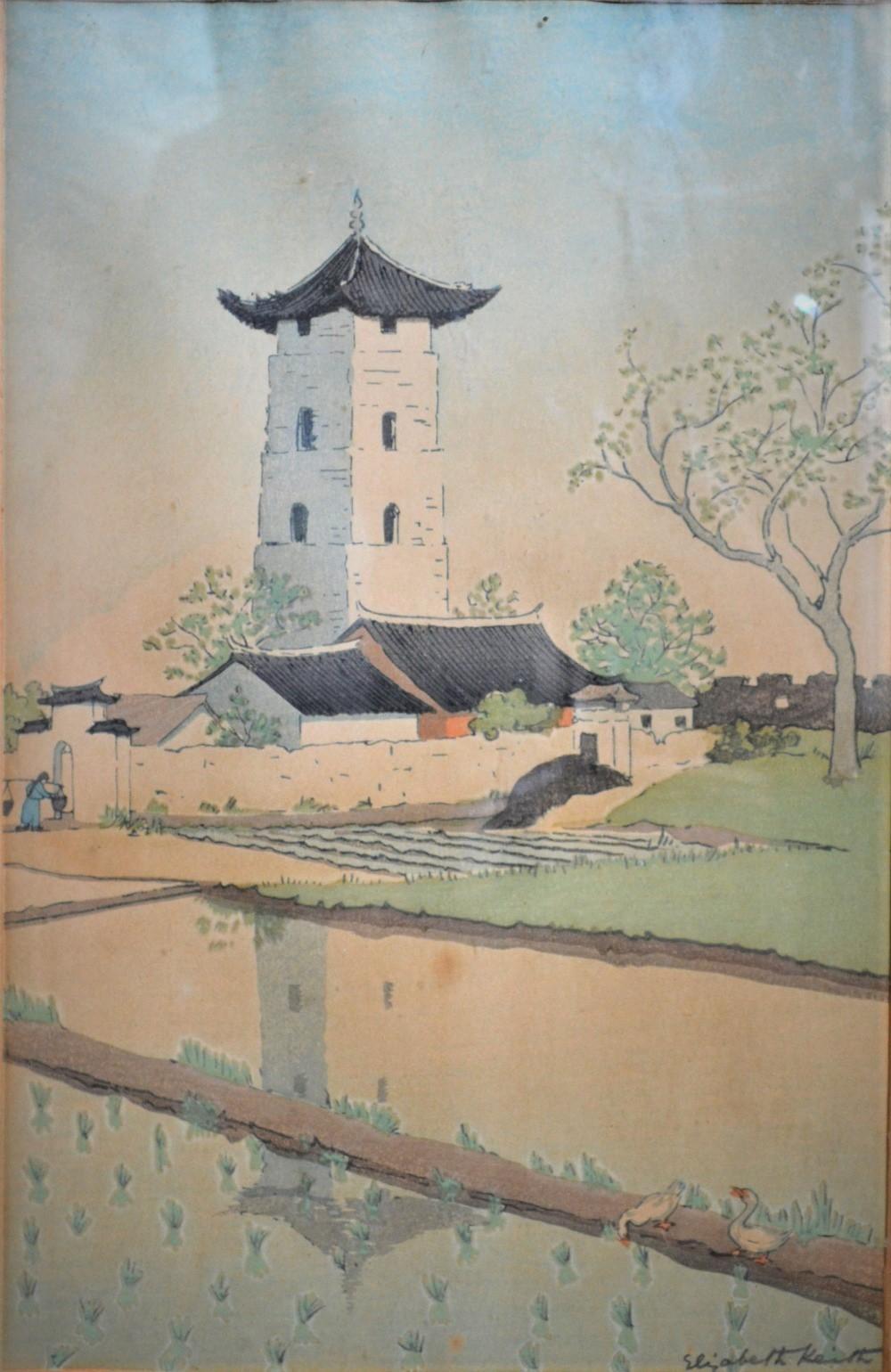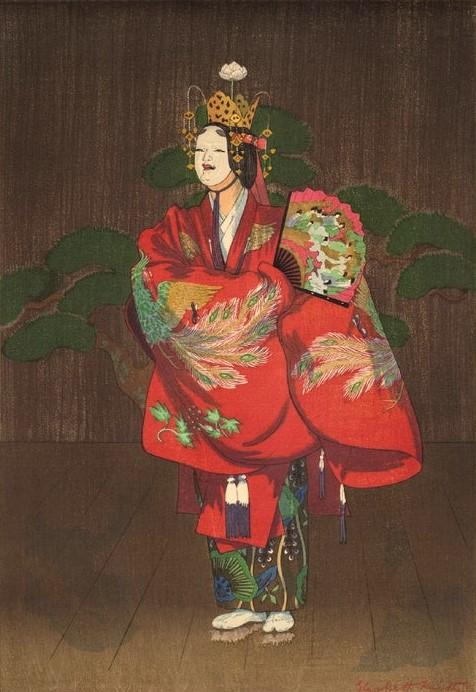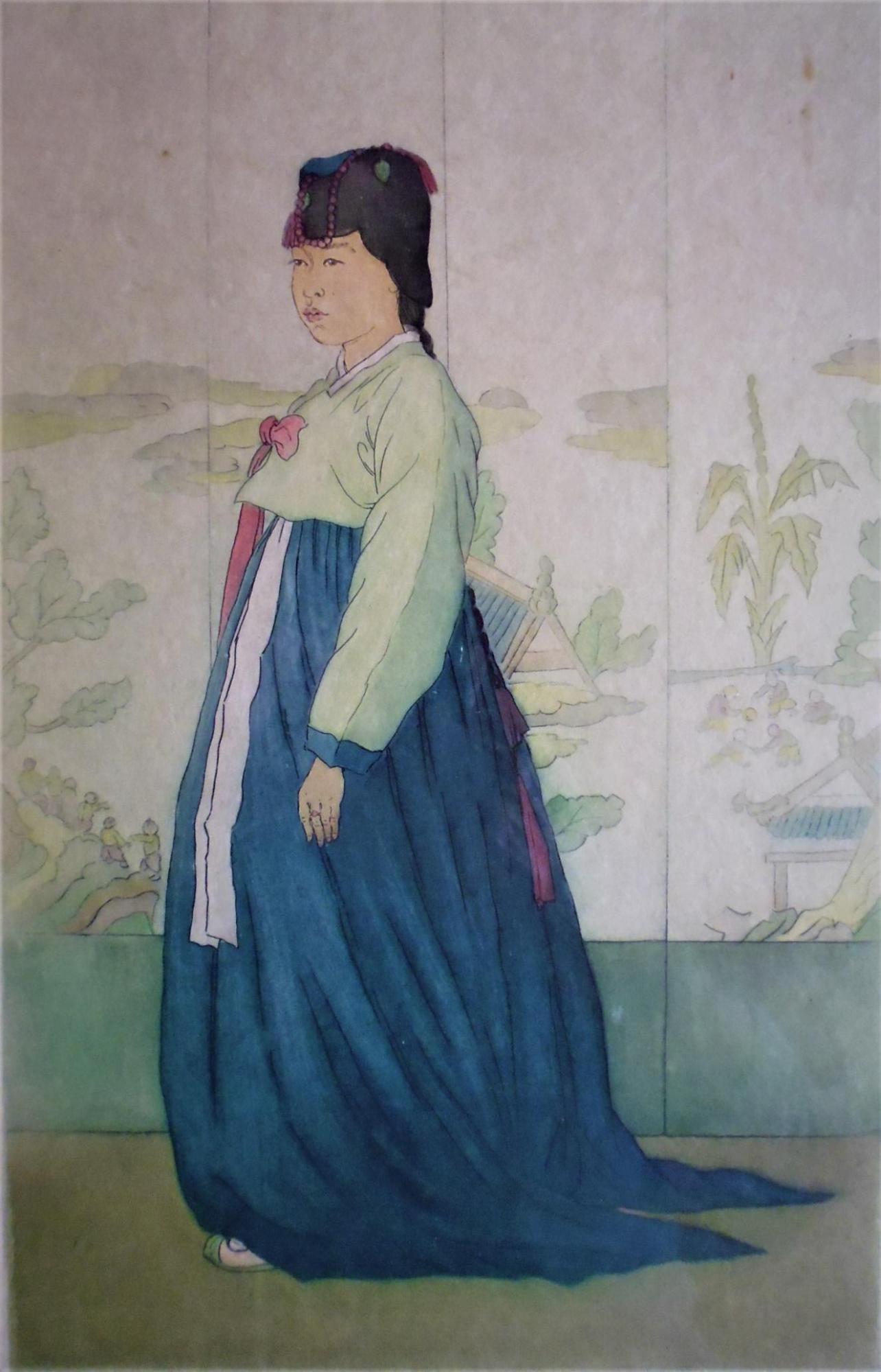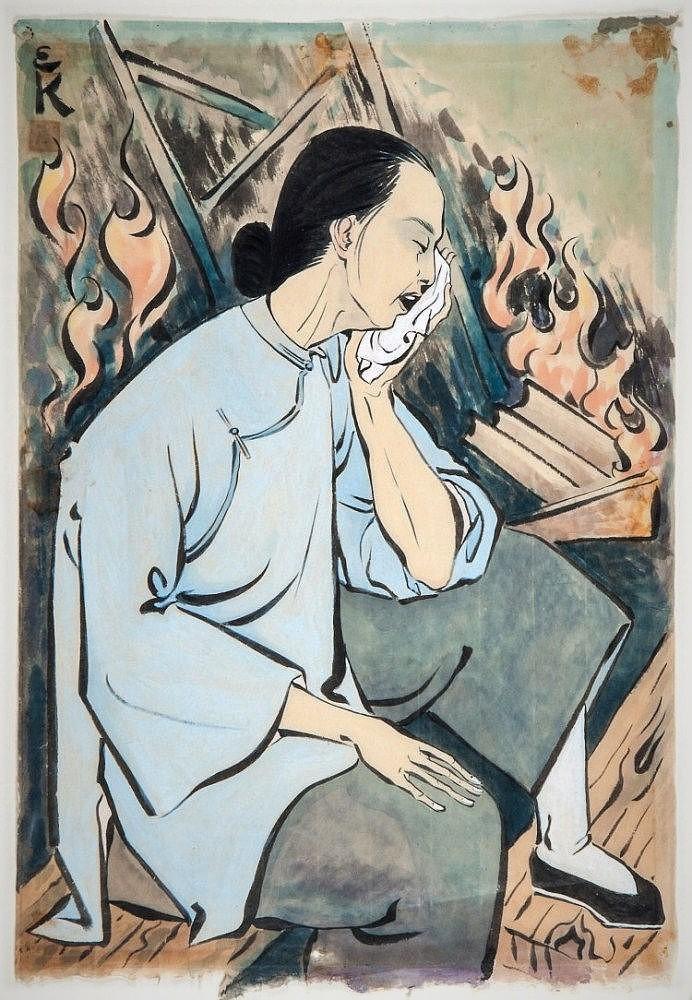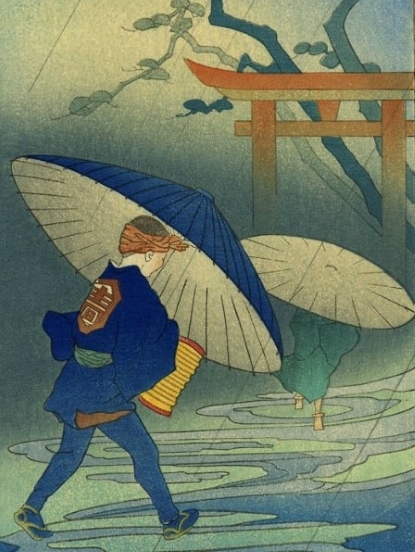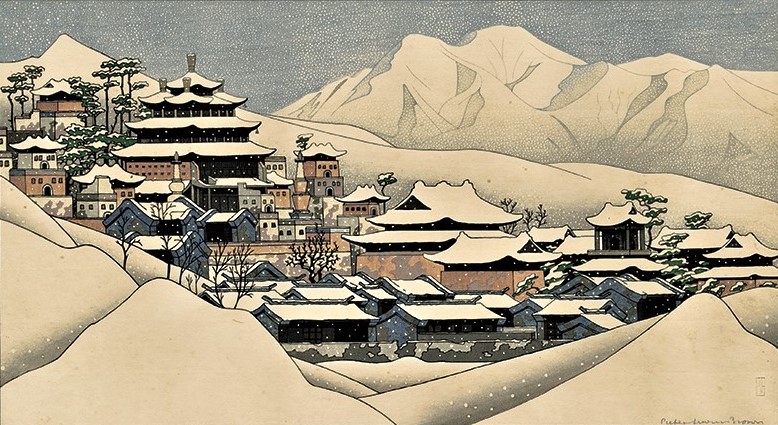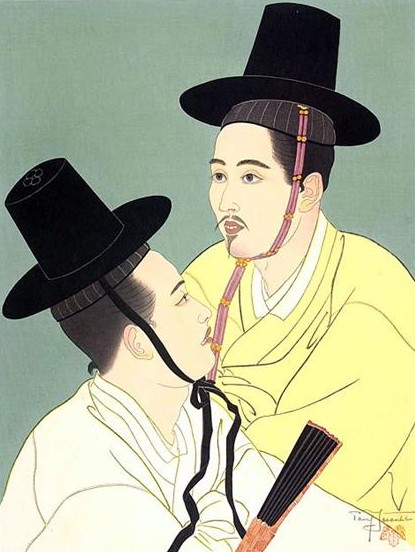ELIZABETH KEITH (1887-1956)
Relatively little is known about the life of Elizabeth Keith. Anxious to preserve her privacy, she was careful not to become a public figure even if she wrote a lot to present most of her works in two beautifully illustrated books, Eastern windows and Old Korea. But she is certainly one of the most brilliant figures of the Far Eastern school.
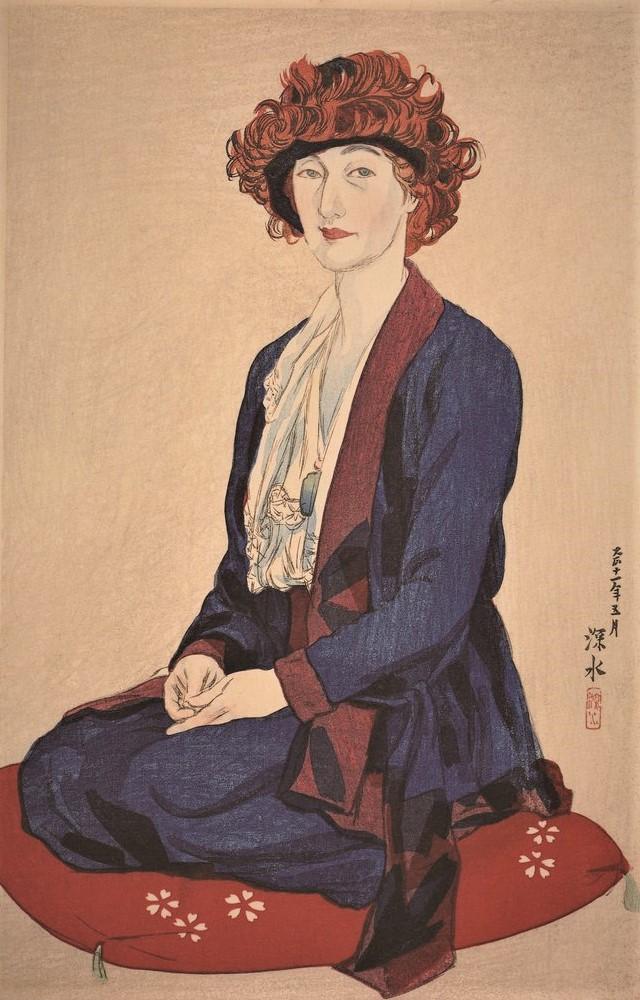
Born in 1887 near Aberdeen in Scotland, she came from a modest background and received no special artistic education despite an early gift and an all-consuming passion for drawing. Her encounter with Asia occurred during a visit to Japan in 1915, when she was already 28 years old. Her sister Jessie, to whom she was very close, had married J.W. Roberston Scott, journalist and publisher of the "New East Press", and they were living comfortably in Tokyo in the Azabu district. The planned short vacation turned into a stay of 9 years ! Curious about this new world, she discovered it pencil and sketchbook in hand. Aware of her real talent, her brother-in-law convinced her to respond to a request from the Tokyo Peer's Club to publish a book for the benefit of the Red Cross: "Grin and bear it" is a unique notebook of caricatures published in 1917 where she sketched all the good society of Tokyo, as shocked as amused by these disrespectful portraits. Here she was launched.
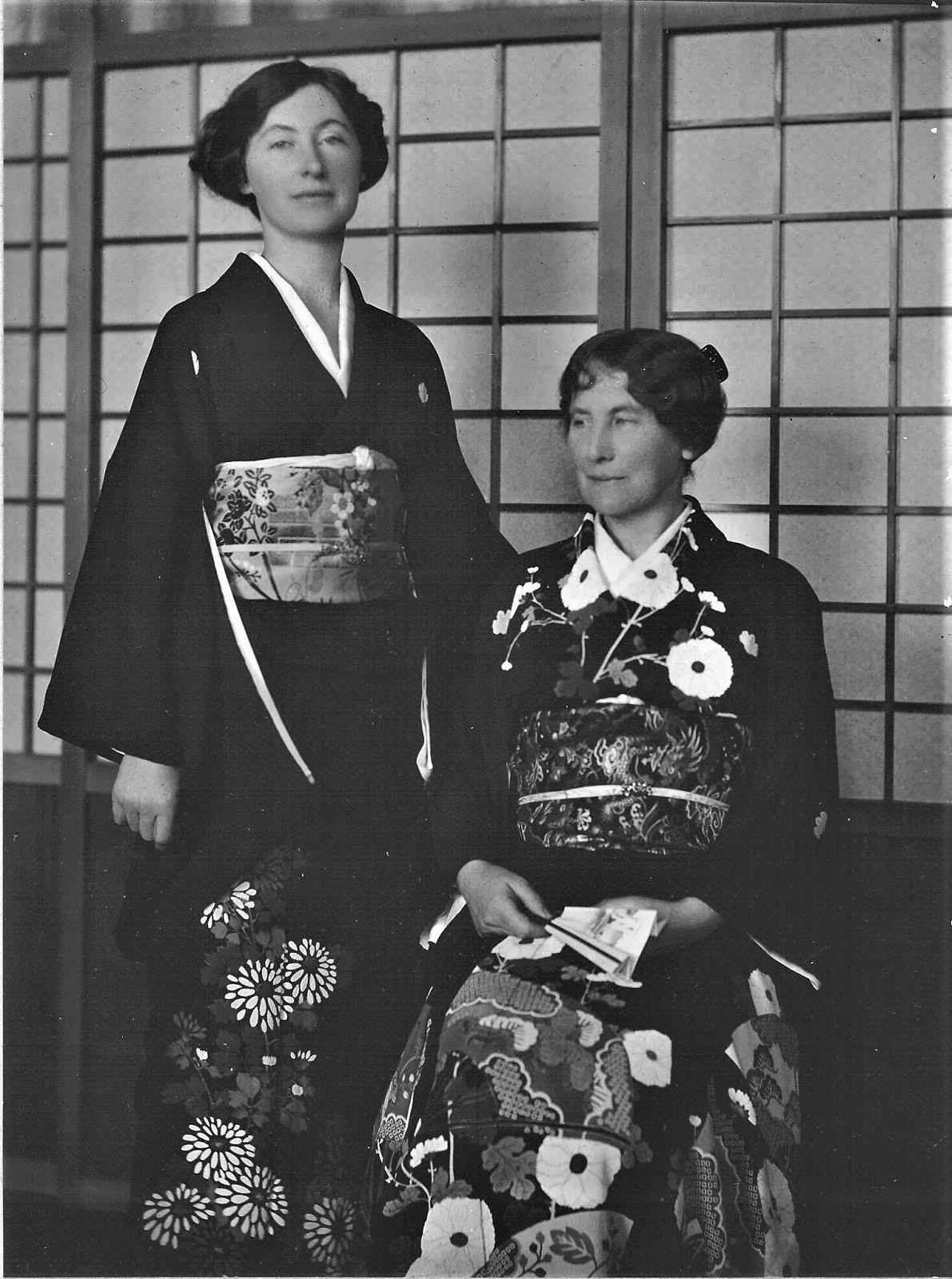
Elizabeth Keith made her way very quickly. She became friends with Charles W. Bartlett and his wife Kate and the American painter had a real influence on her creation. Like him, she multiplied her travels, not only to Japan but also to China, Korea, Malaysia, Singapore and the Philippines, finding food and lodging with local personalities or, more often, in the depths of the countryside, with Western missionaries. She was eager for landscapes as well as faces, costumes and traditions and recreated them with sensitivity and great humanity, mastering both the line and the colours of her watercolours. The success came from her meeting in 1919 with the publisher Shozaburo Watanabe (1885-1962). Once again, the man behind the revival of Japanese prints made the right choice by betting on the talent of this unknown Western woman who gave him her watercolours so that he could transform them into woodcuts. The first engraving published in 1920 was East gate, Seoul, Moonlight.
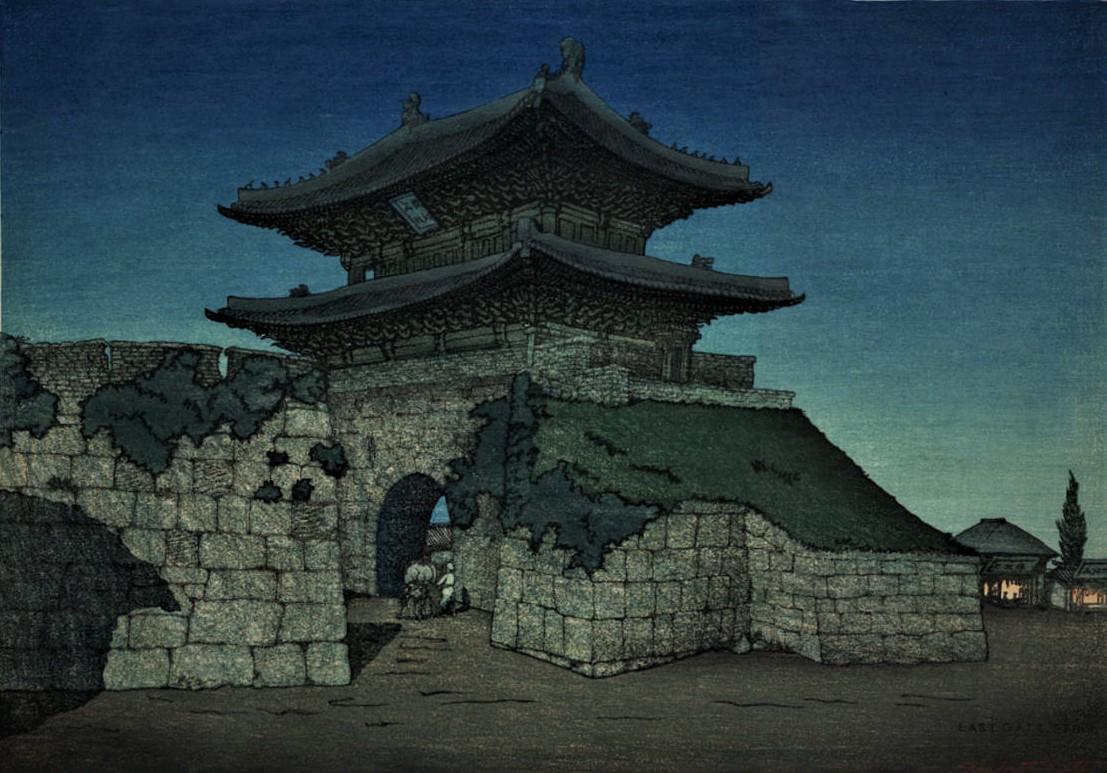
Elizabeth Keith acquired in two years the knowledge of the techniques of wood engraving but she was content to paint the original watercolours and to control the work of engraving and printing entrusted to the craftsmen of Watanabe. In 5 years, at the cost of intense work, she managed to create around sixty prints, most of which are pure masterpieces. These years have been also the beginning of a real commercial success, both in Japan and in the United States and England.
In 1924, she returned to Europe and spent almost a year in France, near Fontainebleau. There she learned other engraving techniques and discovered the wealth of artistic movements that abounded in Europe in the 1920s. She remained however all her life faithful to the initial expression of her art forged in the Far East. Back in London, she again lived in the family home and did not hide her nostalgia for past years in her writings. She continued to transmit to Watanabe the watercolours that she painted from the sketches she had made during her travels in Asia, but at a less intense pace. She sometimes switched to copper engraving. In 1927, she published with her sister Jessie Eastern windows, an artist's notes of travel in Japan, Hokkaido, Korea, China and the Philippines, a richly illustrated work which reinforced her notoriety. Several exhibitions were organized in the United States, notably at the Honolulu Academy of Arts and at the Pacific Asia Museum in Pasadena.
During the thirties, she made three more stays in Asia during which she met in Seoul another monument of the Far Eastern movement, Paul Jacoulet, who then began a major work and she also saw her friends Bartlett again in Hawaii.
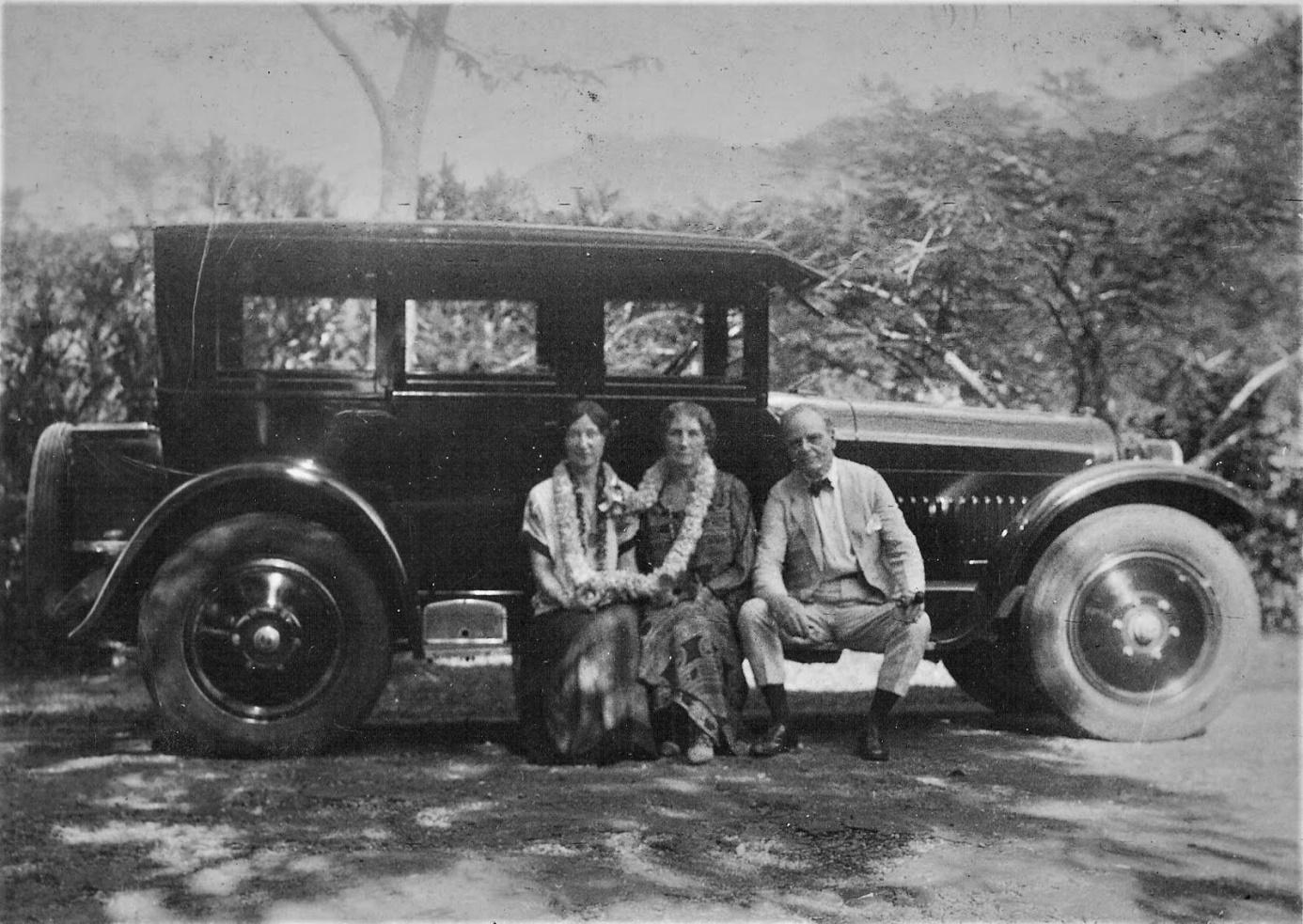
But her productions were becoming rarer. However, she still produced some major works with Malay landscapes, Korean portraits and those of Japanese theater actors. With the help in Chicago of the painter Bertha Evelyn Jaques (1863-1941) and in Portland of the famous collector Gertrude Bass Warner (1863-1951), in 1937 she successfully organized major exhibitions and a tour of several cities in the United States. The same year, during another exhibition in London, several of her works were acquired by Queen Mary.
From 1938, the image of Japan deteriorated so much that she had to give up exhibiting her works and the war years deprived her of all financial resources. She stopped painting but still had the strength to publish in 1946, still with her sister Jessie, a magnificent book Old Korea, the land of morning calm. She died in London in 1956.

The personality of Elizabeth Keith is difficult to define because discretion was for her a rule of life. A hardened bachelor, faithfully linked all her life to her sister Jessie, we do not know of her romantic relationships but she had a large number of friends. She never had children but painted them with love and talent. She constantly sought financial independence without compromising on her creative will. Far from having had a wise life, she did not hesitate to travel through Asia in the most remote regions and at dangerous times, always with the same intense curiosity for landscapes, cultures, uses and customs she discovered, transcribing a whole humanity in her drawings and watercolours. She was also deeply influenced by the new ideas of the Christian Science Church and participated in charities for Chinese and Korean women victims of Japanese aggression. All this hidden strength appears in a powerful work that includes more than 140 engravings. Without any initial training, she managed to rise to the highest level among orientalists, recognized by her peers as well as by Japanese artists who worked to revive the world of Ukiyo-e. She is also the one who has contributed the most to the discovery by the West of Korean culture and civilization. Finally, she undeniably paved the way for Paul Jacoulet who, without having admitted it, owes her a lot.
Bibliography :
- Eastern windows, an artist’s notes of travel in Japan, Hokkaido, Korea, China and the Philippines, by Elizabeth Keith, Houghton Mifflin Company, Boston, 1928
- Old Korea, the land of morning calm, by Elizabeth Keith and Elspet Keith Roberston Scott, Hutchinson & Co, Londres, 1946
- Elizabeth Keith, by Malcom C. Salaman, in Masters of the colour print (vol.9), The studio, Londres, 1933
- Elizabeth Keith, the printed works, by Richard Miles, Pacific Asia Museum, 1991
The collection

